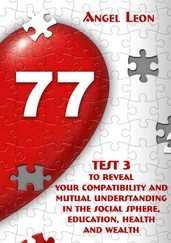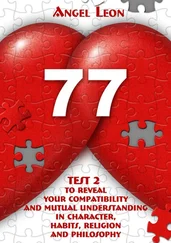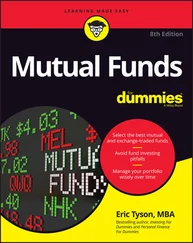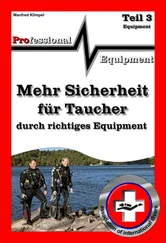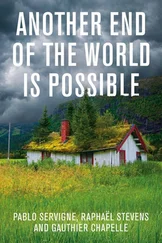1 ...7 8 9 11 12 13 ...16 More importantly, bacteria are the source of life’s driving forces: photosynthesis and respiration. Photosynthesis, set up by cyanobacteria (known as blue algae), is no more and no less than the capacity of the living world to capture the light of the sun and store it in the form of large molecules (sugars and fats). Respiration, the reverse process, is the ability to use these molecules formed by photosynthesis as a source of energy. These two processes are the result of associations and fusions between bacteria. 39
It would be a shame not to add, even if we don’t have time to dwell on them here, the communities of animals living along the hot springs on the ocean floor, cultivating their symbiotic bacteria and able to live without oxygen on the basis of the minerals spat up by hydrothermal fluids; the many examples found in the oceans of animal bioluminescence provided by bacteria; the huge area of research into antibiotic bacteria, used by insects, corals, sponges, lichens and plants to protect against pathogens, and so on. 40In short, bacteria, and especially mutual aid, are found everywhere; you just have to bend down to take a closer look.
During our research, we were surprised by the avalanche of very recent studies. It must be said that the dizzying acceleration of DNA sequencing finally allows all the bacteria present in any environment to be detected, where previously only those that were happy to grow on the culture media in labs were noted. The results are irrefutable: the propensity of bacteria to collaborate seems endless. 41
All the colours of ‘symbiodiversity’
For 3.8 billion years, living creatures have developed a thousand and one ways to associate, to cooperate, to be together or to completely merge. These relations between identical, similar or totally different beings can take many forms: compulsory or optional, temporary or permanent, asymmetric or symmetrical, embedded or in parallel, timid or fusional, conscious or unconscious, momentary or lasting, new or ancestral, surprising or routine.
From mutualisms (diffuse associations between species) to symbioses (compulsory associations), from occasional collective action to fusional coevolution, favours are done and returned in all directions: protection in exchange for food, transport for protection, food for care, information or removal of parasites, and so on. We discover with wonder what is called symbiodiversity .
The living world is teeming with all these interactions, which have been constantly created, invented, transformed, reinforced, broken down and erased ever since life has existed, in a sort of infinite ballet. A vision emerges: that of a changing and multicoloured web of life, woven by some threads that have a shade of competition, predation or parasitism, and by other, very numerous threads that adopt the colours of mutual benefit. It is the diversity of hues and textures that ensures the resilience and longevity of this canvas.
For now, we will note from this quick overview of non-human beings that (1) mutual aid exists, (2) it is ubiquitous and (3) it potentially involves all living creatures, including humans.
We are an inextricable bundle of interdependencies
Until proven otherwise, humans do not have the ability to photosynthesize (to store the sun’s rays in the form of appetizing molecules). We draw our energy from ingesting and then burning the tissues of plants, or the tissues of animals that have eaten the tissues of plants. This process of combustion, which is called respiration, is the result of an ancestral bacterial fusion. So here is the first brick of associations that makes us human beings (no. 1). In addition, our cells work together to form a multicellular organism that divides the work into bundles of very varied and coordinated functions. We are also an association of specialized cells (no. 2). In addition to this, the organism which serves as our body shelters a huge population of microorganisms whose fate is intimately bound up with ours. 42It is impossible for us to live without this microbiota, and vice versa (no. 3). To live, we eat plants and animals that we have domesticated and with which we have coevolved for millennia. Then we depend on an infinite number of living species to ensure the presence of air, water, nutrients, materials and habitable places (no. 4). Finally, no human being exists in isolation. We are the product of several human associations, those which enable us to live today, families and society in general (no. 5), but also those which preceded us and left us all the information and all the objects necessary for present-day life: that is, culture (no. 6). After all, no human being in the world is able to build a cell phone on their own just from what they can find in nature!
So we are the product of an interlocking set of associations that have been around since the advent of life, and which still take place today, with societies of a unique size and complexity, making us one of the most cooperative species in the living world. In short, we are mutual aid incarnate. This leads, as in certain social insects, to what ecologists call an indisputable ecological ‘success’: 43we have colonized the whole earth (which does not necessarily guarantee a long stay on this planet).
Setting the record straight
Not all interactions between living creatures are beneficial. Like humans involved in corporations, governments and property management, the species of the six kingdoms sometimes scam, ignore, avoid, attack and manipulate each other – not to mention the fact that these relationships may change in the course of a day, a season, a life or a geological era. Tensions ease, friendships fester, pacts are loosened, friends betrayed. Some links are very stable while others are very volatile.
How are we to classify all these interactions between species? One simple way to do this (one which doesn’t account for complexity, but allows us to put our ideas into order) is to draw up a small table with two columns (species A and species B), and consider the benefits (+) and the costs (−) of the interactions between the two. 44
On the first line there are the mutually beneficial relations between two species (+/+ relations), those that we have just been discussing. They are called mutualisms in general, and symbioses in the particular case where these two species cannot live without each other.
When species tend to politely avoid each other, we speak of coexistence (0/0 relations). This is the case in the Amazon rainforest, for example, among arboreal ants, whose hunting territory is an entire tree (and woe betide any other insects that land on it!). In the evening, the diurnal species returns to its nest and leaves room for the nocturnal species until the early hours of the morning. Our intuition as biologists is nevertheless that the box ‘coexistence’ in our table is a grabbag in which we temporarily store the interactions whose advantages and disadvantages are as yet unclear to ecologists.
| Species A |
Species B |
Relationship |
| + |
+ |
Mutualism/symbiosis |
| 0 |
0 |
Coexistence |
| + |
0 |
Commensalism |
| − |
0 |
Amensalism |
| + |
− |
Predation/parasitism |
| − |
− |
Competition |
Because there may indeed be disadvantages. This is the case with (more or less) asymmetric relationships. For example, between the fungus Penicillium , which naturally produces an antibiotic, and certain closely related bacteria, the relationship will be neutral for the former, but frankly negative for the latter. We then speak of amensalism (0/– relations). On the contrary, a small epiphytic orchid that lives perched on the branch of a giant of the rainforest will find great benefit in being 20 metres up in the air, but will not offer any advantage to the tree. We then speak of commensalism (relations +/0).
Читать дальше


